In celebration of ten years of Alamo City Moms, we’re sharing some of our favorite, most relatable, and best-loved content from the past. We hope you’ll enjoy a walk down memory lane with us, and realize that there are so many experiences of motherhood – shared from one mom to another – that bind us together.
Dyeing Easter eggs is a cherished tradition in many families. If you’ve never tried naturally dyeing Easter eggs, you have to try it at least once!
Creating natural dyes is part art, part science, and all fun. Kids will love the experience of choosing food items from around the kitchen to use as dyes, and seeing the sometimes unexpected results when you pull out the dyed eggs.
This project isn’t quick and may seem a bit intimidating at first, but with a bit of planning, you and your kids can make wonderful memories this Easter when you try naturally dyeing your Easter eggs.
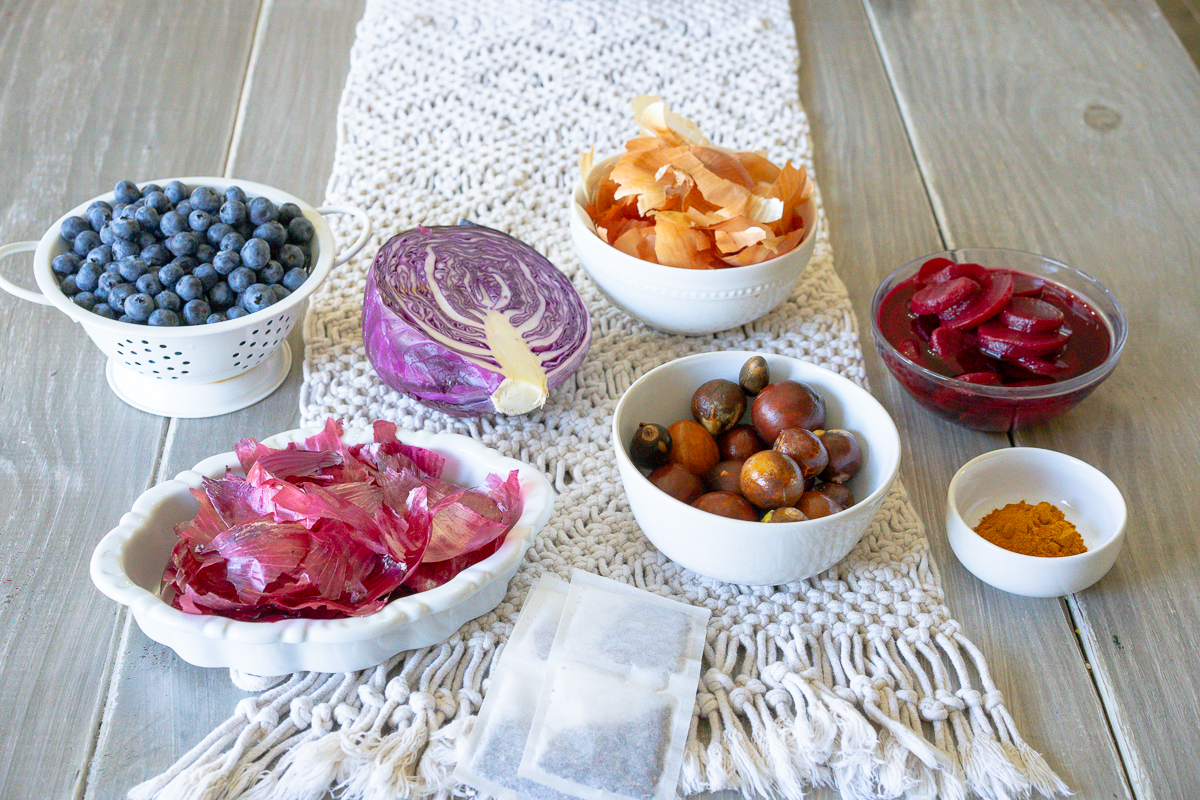
The first step in naturally dyeing eggs is deciding what materials you will use. Definitely choose a few items that are guaranteed to create some fun colors, but don’t be afraid to get creative and try some new ideas here.
For our first time naturally dyeing eggs, we tried purple cabbage, red onion skins, yellow onion skins, beets, ground turmeric, avocado pits, and blueberries.
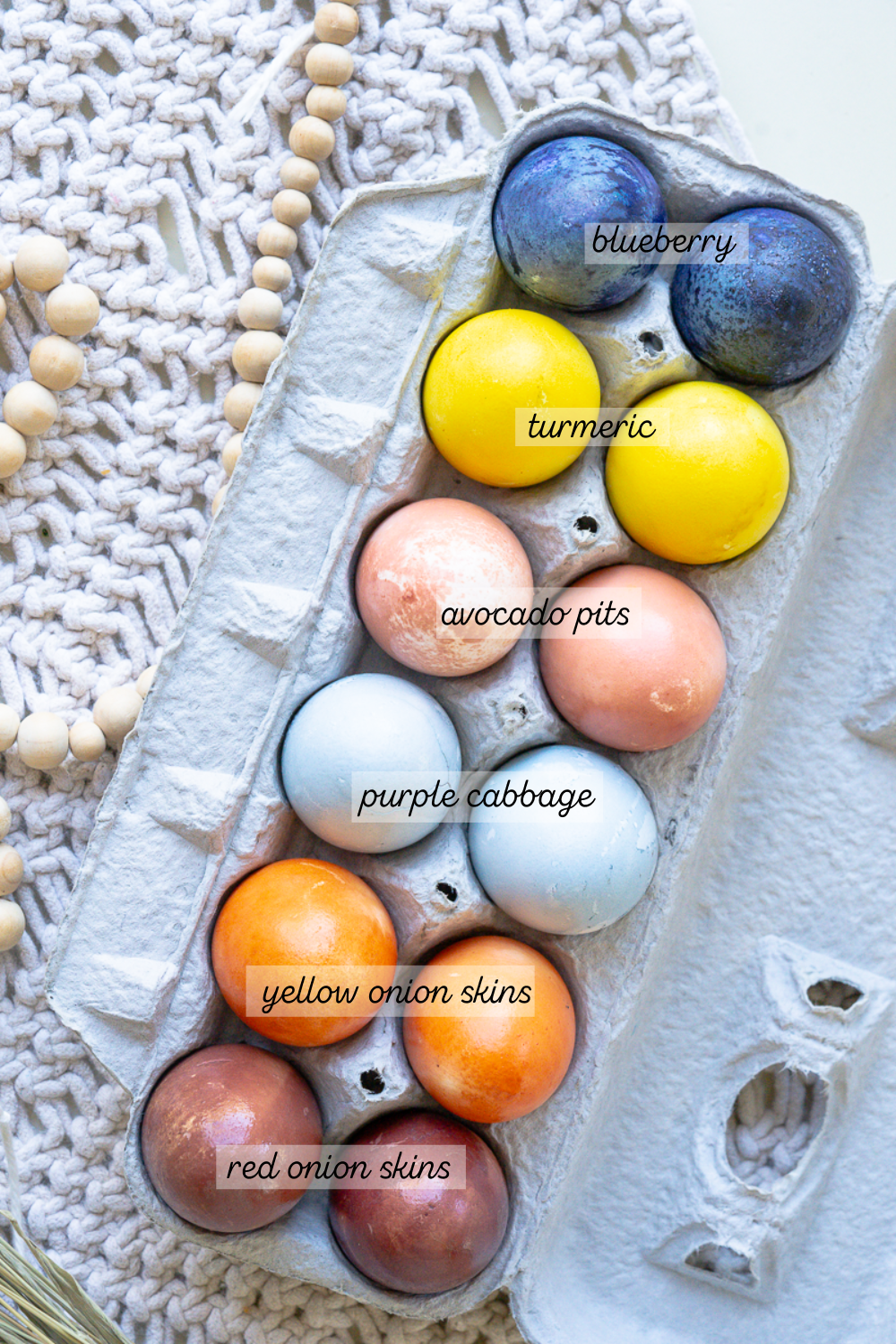
The purple cabbage turned out to be my favorite: a light, pastel blue color. The red onion skins made a gorgeous reddish brown color when I used older, dried skins and a lighter, almost lavender color when I used fresh onion skins. The yellow onion skins created a beautiful deep orange color.
My first attempt at creating dye with beets was basically a fail because I took a shortcut with canned beets, which created a nice (albeit boring!) brown color. Fresh beets will give you a pretty pinkish brown color, which is definitely worth the extra trouble!
Ground turmeric produces an amazing golden yellow just as you would expect. Avocado pits created a pretty light egg, while the skins also make a great source for dye – simply boil the skins and pits together to create a stronger pink hue.
Blueberries produced the deepest color for our eggs, but little hands may have poured in more blueberries than we actually needed! We also experimented with hibiscus tea, and found that just one bag creates a nice pinkish lavender color, while several bags turned the dye to more of a light brown color.
The best part about creating natural Easter egg dyes is that you can use scraps from your kitchen and things you already have on hand to create a range of beautiful colors.
Plan ahead by saving up onion skins while cooking for several weeks to set aside for dyeing. Place skins in a bowl or container so that they will continue to dry out until you are ready to use them. Rinse avocado pits and store in the freezer until you have enough to create a batch of dye.
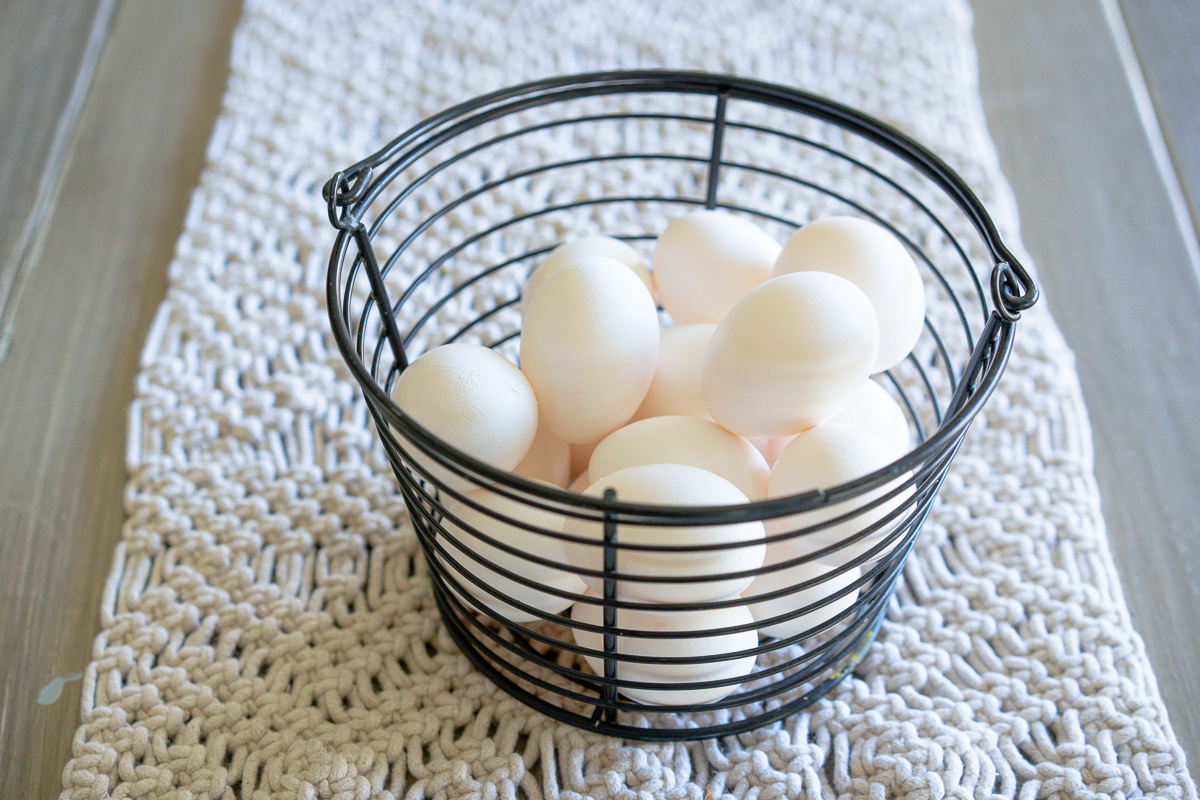
When dyeing eggs, white eggs will produce more of the pastel colors. Brown eggs will give you more bold colors, but you run the risk of lighter hues not showing up at all. We currently have 29 chickens, but unfortunately, they mostly lay brown eggs, so I ended up getting white eggs from the grocery store for this project just to get the best colors.
Creating natural dyes takes up a lot of kitchen space so make sure all of your dishes are clean and ready before you begin this project. You’ll need several pots for boiling if you plan to make several colors – I found it easiest to boil 3 colors at a time.
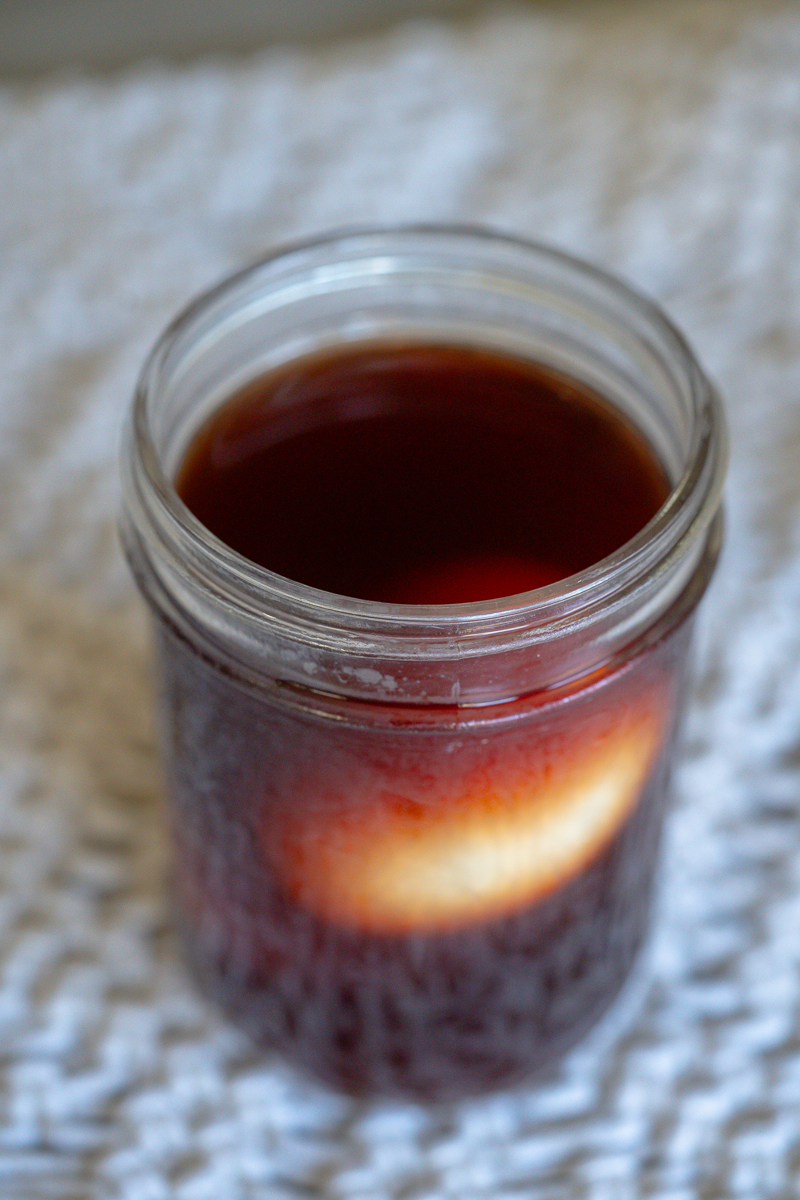
You’ll need a heat-safe bowl or large measuring cup to catch the strained, hot dye liquid. Plus, you’ll need some kind of container to soak the eggs in the dye. I used wide-mouth mason jars, but bowls would work well too. You just need to make sure you have enough room for the number of eggs you plan to dye so that they can all be submerged in the liquid.
Once you have gathered all the materials, you also need to make sure you clear out some space in the refrigerator to allow the eggs to soak overnight.
It takes a little work to get set up, and I’ll be honest, boiling cabbage and vinegar aren’t my favorite air freshener scents, but this project is totally worth it! I had each child guess what color the dyed eggs would be and it was such a sweet moment when we pulled each egg out to reveal the colors.
Our eggs weren’t perfect—little hands helped remove them from the dye so they got a little scuffed up, but they are beautiful in their own way. We’ll cherish these delightful eggs while they last (not long in our house!) and hold the memories for years to come.
Materials:
- Hard-boiled white eggs
- Several pots and saucepans for boiling dye
- Fine mesh strainer
- Heat-safe bowl
- White vinegar
- Several bowls or mason jars
- Egg carton
For each batch of dye, you will also need some type of food item to provide the coloring.
Suggested colors:
- 1 cup chopped purple cabbage = light blue eggs
- 1 cup red onion skins = reddish brown or purple eggs
- 1 cup yellow onion skins = orange eggs
- 1 cup fresh beets = pinkish brown eggs
- 2 tablespoons ground turmeric = bright yellow eggs
- 1 cup avocado pits = light pink eggs
- 1 cup blueberries = deep purplish blue eggs
- 1 bag of hibiscus tea = lavender or tan eggs
Instructions:
To create your dye, place the recommended amount of the coloring source with three to six cups of water in a saucepan. Three cups of water will make enough dye to cover two to three eggs. Use more water if you plan to dye more eggs.
Bring to a boil and simmer for 15-30 minutes until the desired color is achieved. The color will deepen the longer you simmer the dye. Test the color by spooning a small amount of the dye onto a white dish. Keep in mind that the coloring on the eggs will dry lighter than it appears.
Once you are satisfied with the color, remove from heat and allow it to cool slightly. Then pour the mixture over a fine mesh strainer into a heat-safe container. Discard the strained solids, and stir in one tablespoon of white vinegar for every cup of liquid dye.
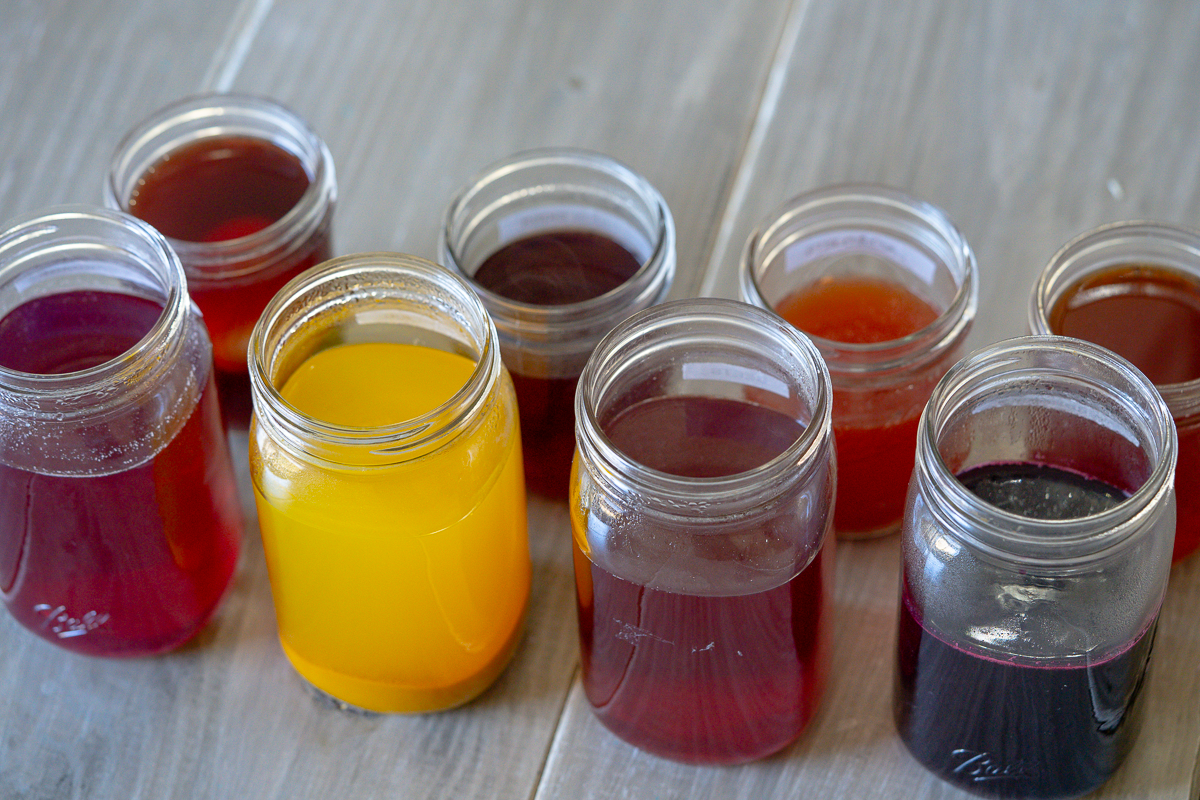 Pour the dye into a bowl or mason jar deep enough for the eggs to be submerged under the liquid. Gently add hard boiled eggs to the container with the dye.
Pour the dye into a bowl or mason jar deep enough for the eggs to be submerged under the liquid. Gently add hard boiled eggs to the container with the dye.
Place in the refrigerator and allow to soak overnight. Carefully remove each egg with a spoon using care to touch as little as the egg as possible to avoid rubbing off the wet dye. Place in an egg carton for about 30-45 minutes to dry thoroughly.
To achieve a darker hue, place dried eggs back in the dye and refrigerate for six to eight additional hours. Again, remove each egg with a spoon and place in an egg carton to dry.
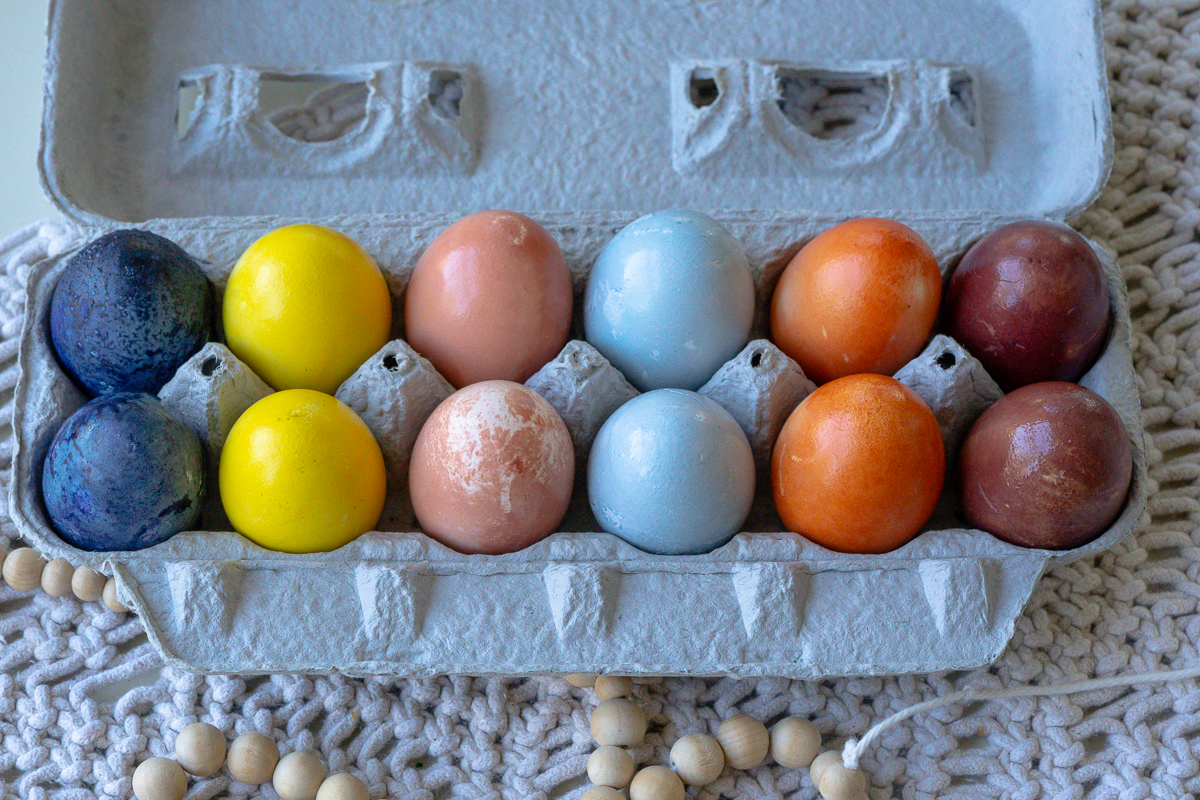
Thank you to ACM Amiga and former contributor Meghann Dibbrell for sharing this great how-to guide to naturally dyeing Easter eggs. You can read more from Meghann’s on her site, “Rooted Childhood“, or follow her on Instagram for tons of creative learning ideas.











